Retail media networks connect brands directly with high-intent shoppers at purchase. Powered by first-party data, these platforms provide visibility into customer behavior, enabling precision targeting that traditional advertising channels simply can’t match.
The numbers speak volumes: U.S. brands using sponsored product ads experience 428 percent incremental ROI by reaching consumers primed to convert.
For marketers seeking measurable results in a fragmented digital environment, retail media offers five distinct advantages:
- Increased visibility into the complete customer journey
- Real-time campaign optimization with closed-loop measurement
- Precision targeting for more efficient ad spend
- Strategic placement at critical purchase moments
- Seamless cross-channel integration for cohesive messaging
Learn how brands benefit from first-party data and retail media, and why it’s becoming a top marketing strategy.
First-party data: Retail media’s superpower
The best marketing strategy gets your brand in front of the right audience. But what if you had deeper insights into your audience’s behaviors and preferences? Imagine knowing not just your customers, but what they want, when they want it, and how they prefer to shop.
That’s the power of first-party data—and it can supercharge your marketing ROI.
What kind of first-party data do retail media networks collect?
First-party data is information a company collects from its own customers and audience.
Retail media networks gather many data points, including:
- Shopper product interest: What customers buy, how much they spend, and which brands they prefer.
- Browsing behavior: Which products do customers look at, and what time do they spend on each page?
- Search data: Insights into keywords and the results customers click on.
- Previous and repeat purchases: Helpful for retargeting.
- Loyalty programs: Which deals customers will most likely act on.
- Shipping location: Seasonal trends and geographic preferences.
- Device and engagement data: How customers interact with ads.
Unlike third-party data, which is gathered from outside sources, first-party data is derived from directly observing customer interactions and behaviors. This makes it more accurate, compliant with regulations, and extremely valuable for brands.
First-party data in retail advertising gives you a direct look into your customers’ minds. When retailers share their insights, you can easily personalize campaigns to match your audience’s preferences.
How retail media networks use first-party data
Retailer media networks like Walmart Connect use first-party data to suggest products to high-intent shoppers.
You can showcase products across the retailer’s website and properties at critical points in the buyer’s journey, such as:
- Search pages
- Before checkout
- Post-transaction
By tapping into the power of first-party data, you can create more effective and efficient campaigns while ensuring that every dollar spent delivers maximum impact.
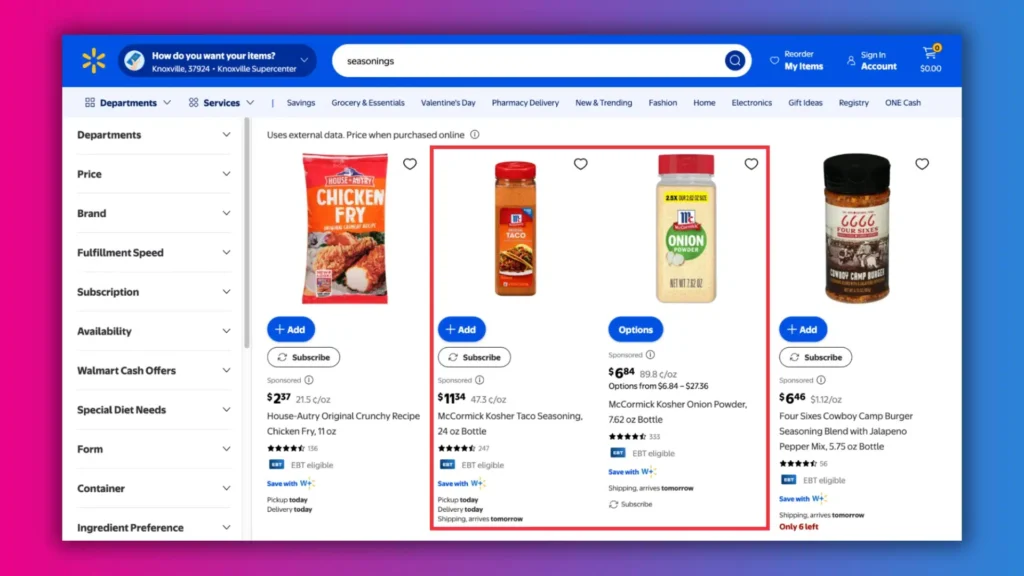
McCormick reaches in-market buyers by surfacing their kosher salt powder on Walmart’s search page for “seasonings.”
5 retail media benefits that brand marketers should know
Brands that tap into retail media networks gain a competitive advantage. They can personalize their messaging, maximize ad spend, and increase conversions.
Here are five key benefits that make online retail advertising a must-have strategy for modern marketers.
1. Increased visibility into the customer journey
Retail media networks offer a deeper view of the customer journey from browsing to checkout, giving you visibility into how buyers interact with your brand and product category.
You can use these detailed audience insights to identify and fill in gaps in your customer journey.

Source: Invoca
Example: How a snack brand used Instacart data to 2x sales
Take The New Primal. The grab-and-go snack brand recognized that many shoppers used delivery services, like Instacart, to buy groceries.
After analyzing a year of Instacart campaign data, they pinpointed key shopping events—such as back-to-school and summer vacation—when parents were more likely to buy snacks for their busy families.
After running targeted campaigns during these peak times, the brand nearly doubled its sales in 2024. It also helped them capture many new-to-brand (NTB) buyers, supporting their goals to increase brand awareness and grow their customer base.
Instacart’s first-party data ultimately helped them:
- Identify key buyer journey moments
- Improve the customer experience and increase conversion rates
- Maximize their return on ad spend (ROAS)
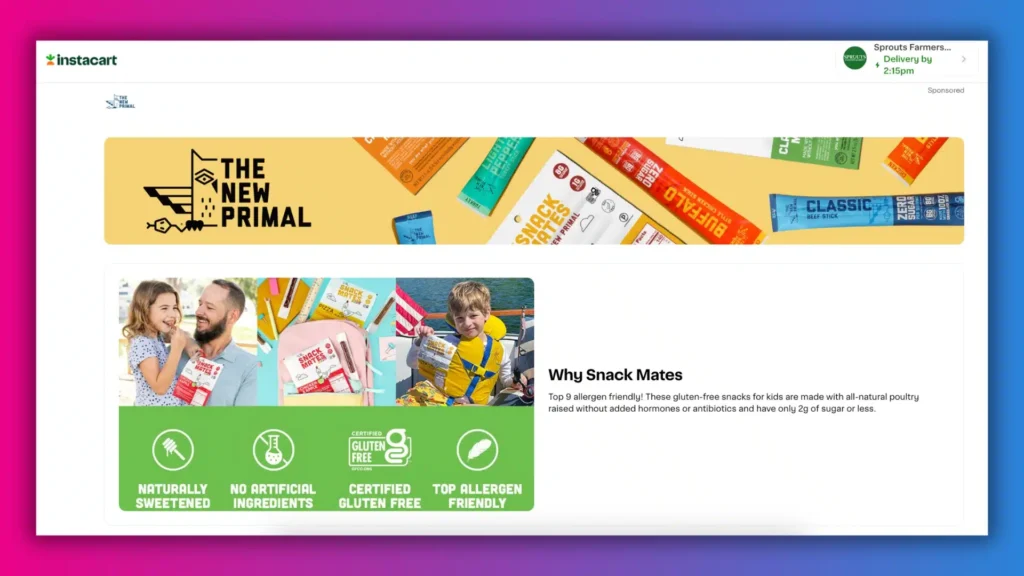
The New Primal continues to invest in their relationship with Instacart and leverage first-party data to maximize their campaign impact.
2. Real-time campaign optimization with full-funnel measurement
Retail media networks are closed-loop environments, making it easy to track and measure campaign performance in one place.
Closed-loop environments help brands:
- Measure conversions within the same ecosystem
- Simplify campaign analysis and reporting
- Link marketing efforts directly to sales outcomes
- Create transparency for ad spend
- Gain real-time campaign performance data
These insights help brands continually optimize campaigns and produce better results over time. Some brands even use retail media networks as a testing ground for larger, more expensive campaigns on other channels with more limited data, such as network television.

Source: The Art and Science of Retail Media with Mike Feldman (podcast episode)
Example: How a men’s skincare brand boosted sales 1.7x with Amazon Ads data
NULL, a men’s skincare line, used Amazon Ads’ first-party data to help inform its marketing strategy by identifying keywords customers use to search for products within relevant product categories.
NULL’s strategy looked like this:
- Analyze Amazon’s first-party data to identify search habits
- Launch a new ad campaign with specific keywords
- Track keyword performance in real-time and analyze
- Analyze the results
- Optimize the campaign by adjusting the keywords, reallocating budget, retargeting, and testing new audiences
By making necessary adjustments as performance data came in, the brand achieved a 1.7x year-over-year (YoY) increase in sales.
Instead of guessing what customers want, brands like NULL can use retail media’s first-party data to serve relevant sponsored ads within the search results.

NULL applied an iterative approach to their sponsored placements, which covered display, search, and brand store promotions.
3. Precise targeting for more efficient campaigns
With retail media networks, you can create better, more precise ads that are more cost-effective and convert high-value shoppers. These insights eliminate much of the guesswork in advertising, allowing you to focus on reaching the right audience at the right time.
For example, by examining purchase history and browsing behavior, you can uncover key moments perfect for serving targeted ads to increase brand awareness.
Ultimately, retail media networks help you go beyond generic marketing strategies. Instead, you can focus on crafting campaigns that capture attention while moving high-value shoppers closer to purchase, increasing efficiency, and maximizing your ROI.

Source: The Art and Science of Retail Media with Mike Feldman (podcast episode)
Example: How a pet food brand reached 40percent of dog and cat food customers on Amazon
Fox4Pets, a pet food company, is a perfect example of how brands can use retail media to increase brand awareness strategically. They worked with Amazon Ads to successfully launch two new pet food brands—DOGGY Dog and KITTY Cat—into the market.
The brand analyzed Amazon’s first-party data with the help of an ad agency to create a full-funnel retail media marketing strategy.
The team identified two key audience segments to target:
- Loyal GranataPet customers
- NTB shoppers
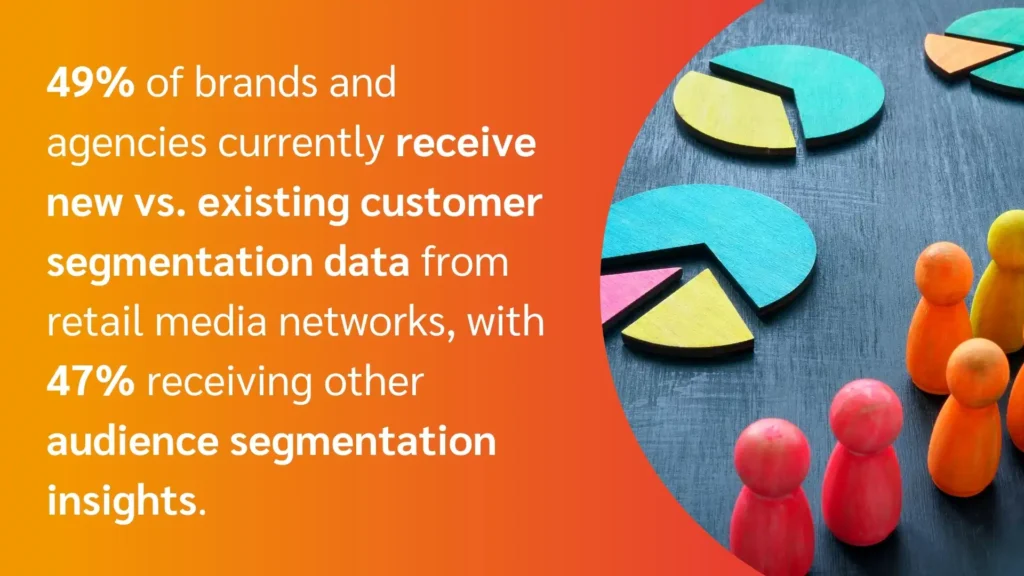
Source: Boston Consulting Group
Video ads were aimed at high-value audiences, such as pet owners and those who previously shopped for pet food and pet accessories. The video ad audience was then used for retargeting, setting the stage for the consideration phase.
Over three months, the video ads reached over 40 percent of Amazon dog and cat food customers. They also achieved a 1,216 percent higher NTB purchase rate than similar campaigns that didn’t use video ads.
Amazon Ads’ refined audience targeting capabilities allowed Fox4Pets to reach high-value customers and achieve exceptional NTB purchase rates.
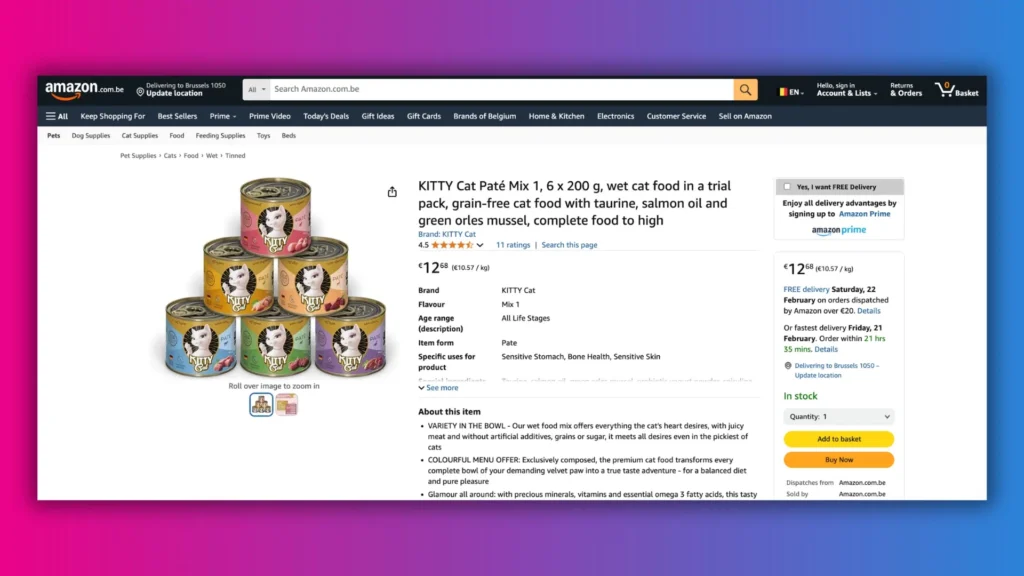
Refined targeting across the whole funnel helped the DOGGY Dog and KITTY Cat brands launch into the market successfully.
4. Increased brand visibility at the point of purchase
Retail media places ads at the point of purchase, grabbing the attention of high-intent buyers who are already searching for products in your category.
It can also capture spontaneous buyers, making it ideal for meeting brand awareness and NTB conversion goals. Once someone makes an unplanned purchase, you can easily convert them into long-term shoppers.
Though search placements are the most popular, retail media networks offer various ad placement locations. You can display ads even closer to where consumers make buying decisions, such as before or during checkout.
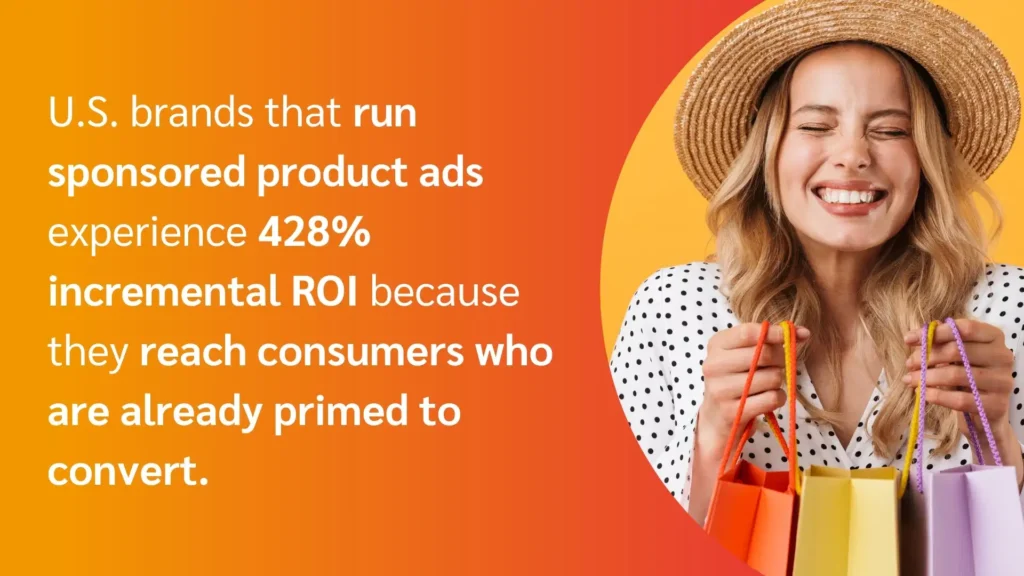
Source: Criteo
Example: How a health bar brand turned 36 percent of one-time buyers into repeat customers with Instacart’s impulse ads
KIND launched an Instacart Ads campaign to advertise its single bars at impulse-dedicated placements, such as right before checkout. The goal was to authentically connect with consumers not actively searching for KIND.
This approach helped them achieve impressive results:
- 72 percent of impulse buyers were NTB
- 36 percent of impulse buyers made a repeat purchase within 8 weeks
- 16 percent of single-serve impulse buyers made multi-pack purchases within 8 weeks
Leveraging retail media’s unique capabilities can allow you to:
- Stay top-of-mind during critical moments in the shopping process
- Inspire impulse buys and influence repeat purchase decisions
- Deliver measurable outcomes, driving a stronger ROI
The key is increasing your brand’s visibility when it matters most—and retail media networks help you do that.
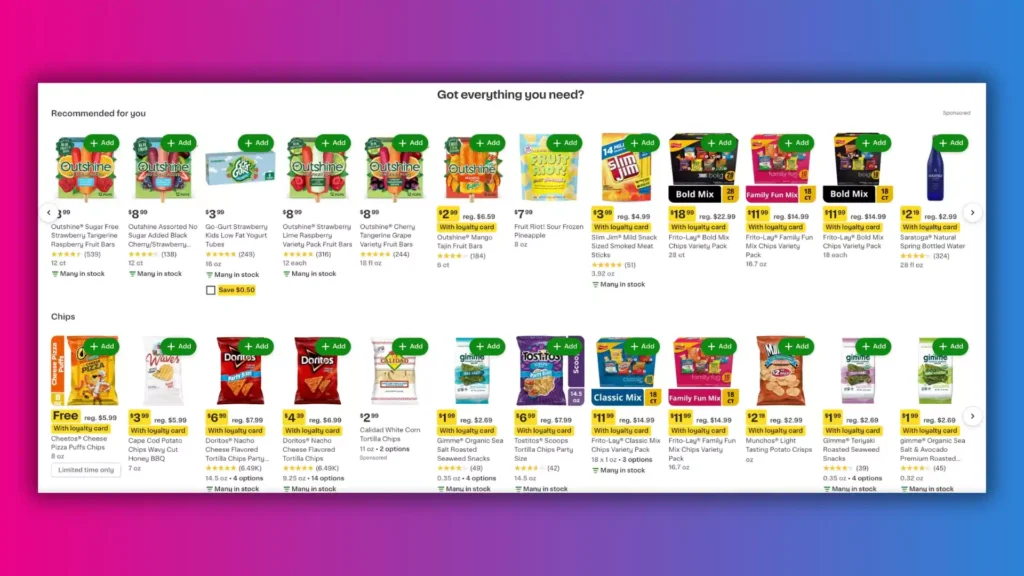
Instacart’s pre-checkout ads are designed to drive last-minute purchases to deliver the same remarkable results seen in KIND’s campaign.
5. More cohesive messaging with cross-channel capabilities
Retail media networks can include both in-person and online shopping. You can integrate various digital and physical touchpoints to create a full-funnel marketing strategy.
Example: How a creamer brand supercharged sales with Walmart Connect’s omnichannel offerings
Danone, the maker of International Delight, partnered with an advertising agency to create a cross-channel marketing strategy to increase brand awareness for their cold cream foam product line.
Danone wanted to use Walmart Connect to increase:
- Brand awareness
- Sales
- ROAS
Danone’s strategy targeted customers at every level of the sales funnel and covered a wide range of onsite, offsite, and in-store tactics.
| Upper-funnel | Mid-funnel | Lower-funnel |
| – CTV ads – Coffee category takeover – Homepage feature – Gallery takeover | – Pre-roll video ads – Pinterest ads – TV Wall (in-store) – Self-checkout ads (in-store) | – Display – Sponsored Search |
Throughout a three-month campaign, Danone gained over 100,000 new customers and increased sales by 11.29 percent.
Retail media’s ability to execute omnichannel marketing strategies in one place ensures your brand doesn’t go unnoticed in key advertising spaces. It also reinforces brand identity and creates a cohesive experience that resonates with shoppers most when they need it.

Source: Skai
Challenges brands may face with retail media (+ how to overcome them)
Retail media marketing offers plenty of advantages, such as increasing brand awareness and ROI. However, if you’re new to retail media, you might encounter some obstacles. Here are a few challenges you might experience, plus strategies to circumvent them.
1. Measuring the true impact of retail media ads
Measuring a retail media campaign’s true impact—incrementality—isn’t always straightforward. For example, shoppers might click the ad for convenience, not because it influenced their purchase.
A/B testing can help separate organic interest from ad-driven sales. Comparing each group can determine the incremental lift your retail media campaigns drive. You can also leverage your own sales data to assess your performance before and after running a retail media campaign.
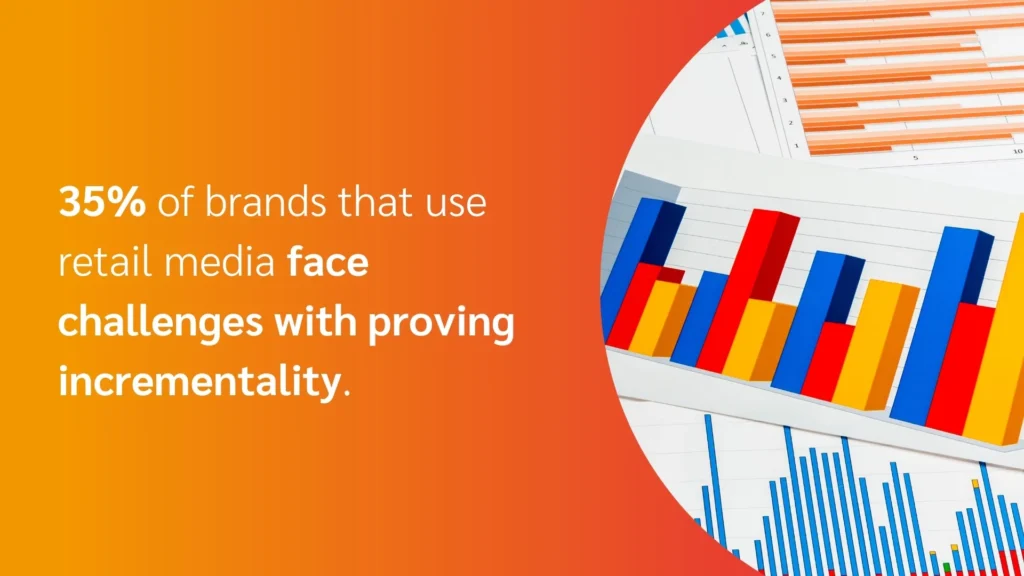
Source: Criteo
2. High competition for limited ad space increases advertising costs.
Depending on your product category, ad type, audience targeting, seasonal demand, and more, you might face fierce (read: expensive) competition for prime ad space.
The fix? Focus on conducting thorough keyword and consumer research to refine your marketing strategy.
Retail media networks’ first-party data can also help you target high-intent audiences, optimize campaigns, and reduce ad spend over time.
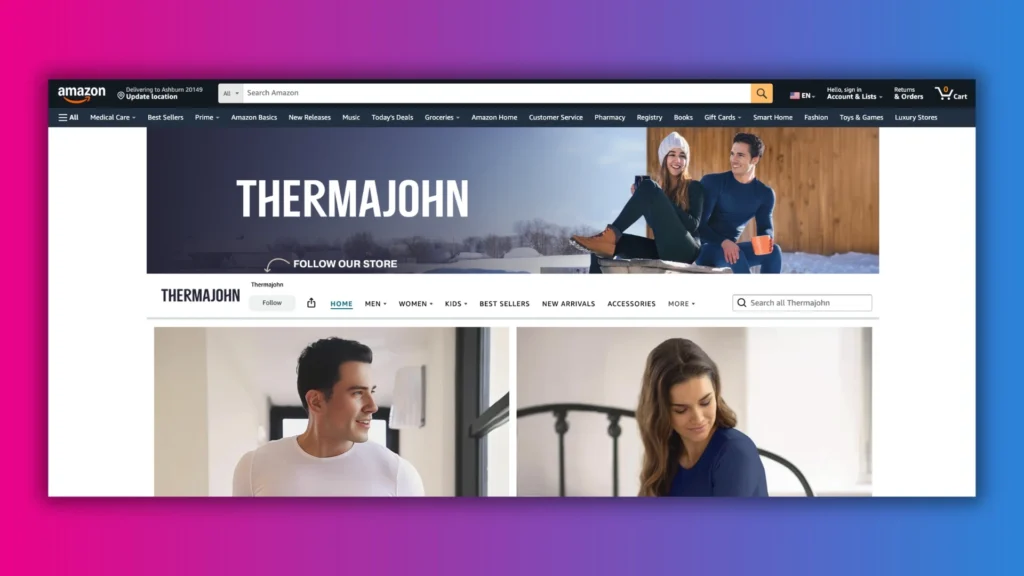
Thermajohn used Amazon Ads’ refined audience targeting to reach high-intent sports and outdoor enthusiasts, leading to a 120percent YoY increase in sales revenue and a 56percent reduction in ad cost of sales (ACOS).
3. Smaller audience compared to broader digital advertising platforms.
Many retail media networks have a smaller reach, making it harder to scale campaigns or achieve the same level of exposure as broader platforms. However, retail media excels at targeting high-intent shoppers, which can make up for this deficit.
There are over 200 retail media networks, with some catering to niche audiences. Selecting retail networks carefully to reach your target audience can ensure your marketing strategy is highly relevant and more effective.
One way to overcome this challenge is to launch your retail marketing campaigns alongside broader commerce media campaigns. This helps expand your target audience and reach customers at every stage of their journey.

Laura Mercier strategically invested in sponsored product placement ads across multiple retail media networks, including UB Media and Amazon Ads.
4. Brands have less control over ad placements.
One of the more frustrating challenges brand marketers run into with retail media networks is being unable to control ad placement. Instead of the brand designing and placing the ad in the search results or a shopping cart, retailers control how and where an ad appears.
Although this might seem like a major challenge, there’s a fix: build stronger retailer partnerships. This can open the door for negotiations and help you define clearer ad placement terms.
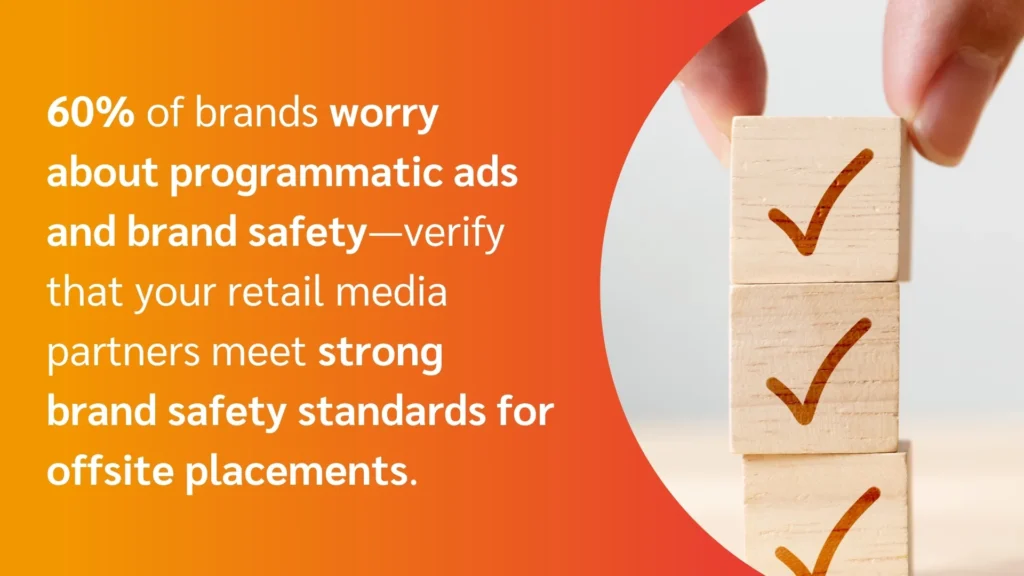
Source: WARC
5. Managing multiple retail media networks can be time-intensive and operationally complex.
Running campaigns across several RMNs can be time-intensive, especially considering each platform may have vastly different workflows. Even after a campaign is live, inconsistent analytics and reporting make it even harder to compare performance data.
Centralized campaign management platforms help alleviate some of the stress. A centralized platform connects your retail media campaigns in one place. With automation and easy access to your campaigns, operating and tracking successful campaigns is easier.
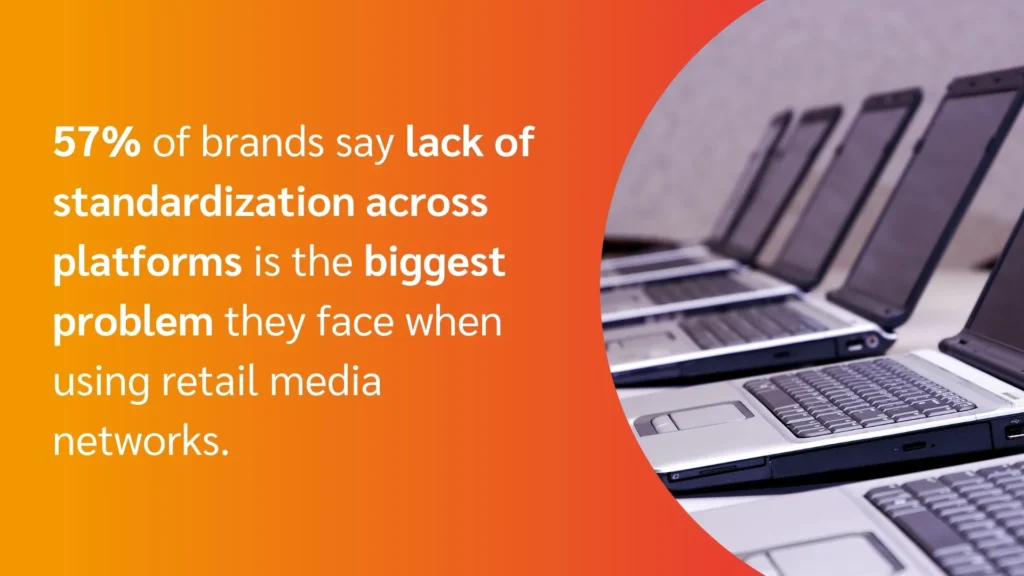
Source: RetailDive
Boost your omnichannel strategy with the power of retail media
Retail media is a powerful way to connect with high-intent shoppers during critical purchasing moments. By analyzing first-party data, brands can refine their targeting, optimize campaigns in real-time, and create a seamless, omnichannel experience that drives conversions.
Success in retail media requires an optimized marketing strategy. And you’ll need to navigate a few challenges, like managing your ad spend and choosing the right retail media network.
Find out more about how to maximize your omnichannel marketing strategy:
- From full funnel to full circle: 5 ways marketers can adapt to the new digital marketing funnel (blog)
- What is multi-channel attribution? [Basics and best practices for 2025] (blog)
- The ultimate guide to partnership marketing (blog)
FAQs about Retail Media Networks
A retail media network (RMN) is a digital advertising platform owned by a retailer that lets brands place ads across its website, apps, and customer data ecosystem. It uses first-party data to target shoppers close to the point of purchase.
RMNs allow brands to advertise directly to a retailer’s audience using first-party shopper data. Ads appear on retail sites, apps, or off-site through partnerships, helping marketers drive sales, track attribution, and improve ROI.
Leading retail media networks include Amazon Advertising, Walmart Connect, Target Roundel, Instacart Ads, eBay Ads, and Kroger Precision Marketing. These networks provide advanced audience targeting and closed-loop attribution for brands.
Amazon Advertising offers massive scale and advanced data insights, while Walmart Connect focuses on in-store data and omnichannel reach. Amazon is ideal for global eCommerce visibility; Walmart excels in physical-digital shopper targeting.
Top RMNs offer robust first-party data, self-service campaign tools, real-time reporting, and omnichannel reach. The best also integrate with DSPs, influencer platforms, and retail loyalty programs for full-funnel visibility.
Amazon Advertising and Walmart Connect typically lead ROI due to high intent audiences. However, niche networks like Instacart Ads and Roundel can deliver better conversion rates for CPG and grocery brands targeting repeat buyers.
Use A/B testing, optimize product listings, and align ad spend with high-intent keywords. Combine sponsored products with display ads, monitor click-through rates (CTR), and adjust bids based on sales attribution data.
Track return on ad spend (ROAS), conversion rate, cost per click (CPC), sales lift, and attributed revenue. Use retailer dashboards for real-time insights and campaign optimization.
Small businesses can use self-service RMNs like Amazon DSP or Instacart Ads to reach ready-to-buy audiences without large budgets. Focus on niche targeting, optimized listings, and automated campaign tools to maximize visibility and ROI.




